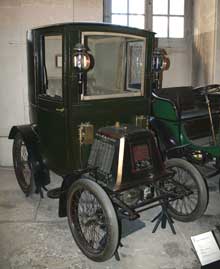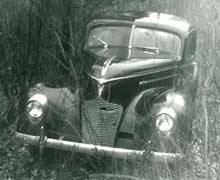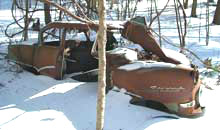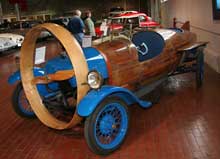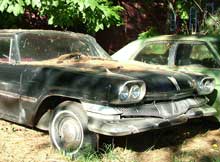Vive la Compiègne
Sometimes the most enjoyable museums are where you least expect them. Nashville's Lane Motor Museum, for example, hides in a former bakery in the Music City. Another of my favorites is Musée National de la Voiture et du Tourisme at Château de Compiègne, about 45 minutes north of Paris by train.
The Musée is not a car museum, per se, as the larger part of its collection comprises 18th and 19th Century carriages and bicycles. The cars number about thirty, but what sets them apart is a collection assembled in 1927, about a third of which are 19th Century cars. They are, not surprisingly, French, and all the pioneer makes like Panhard-Levassor, Gobron-Brillie, Bollée, Delahaye and Georges-Richard are represented. Taking pride of place is La Jaimais Contente (Never Satisfied), the electric racer in which Camille Jenatzy set the world's land speed record in 1899. There's a whole room dedicated to the vehicles of Count Albert DeDion, tricycles, quadricycles, vis à vis and cabriolets. Louis Renault's first car was the 1898 Type A. His company has one, a replica, but Compiègne has a real one, unrestored, and also a 1900 Type C coupe, one of the world's first closed cars.
From the 20th Century we found a 1904 Clement Bayard, 1907 Reyrol and at the entrance the 1916 Sigma Torpédo of World War I ace Georges Guynemer. Away from the visitors' areas we were shown a 1908 Hotchkiss Double Coupé, a 1905 Krieger Landaulet Electrique with electric front-wheel drive, and a Citroën Auto-Chenille. Most amazing is the immense steam carriage built in 1882 by Amedée Bollée. With opulent interior and a crow's nest it was just the thing for a wealthy Frenchman to drive to the railroad station.
Hiding in a corner was an odd little electric van, one of the last automotive projects of Jean-Albert Grégoire. A final irony, on our way out, was discovery of a drain cover from Pont à Mousson, whose automotive heritage includes transmissions for Facel Vega.

